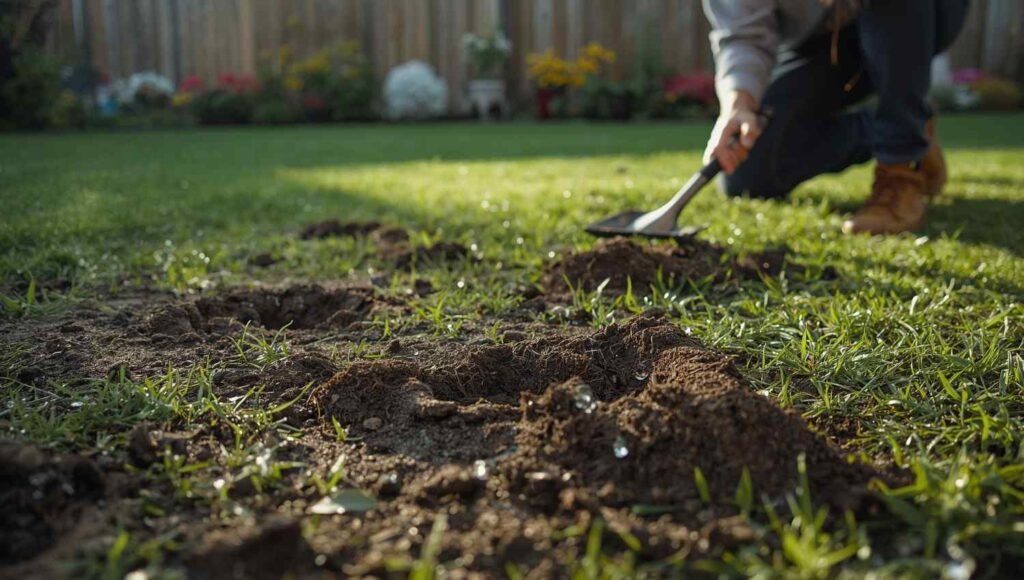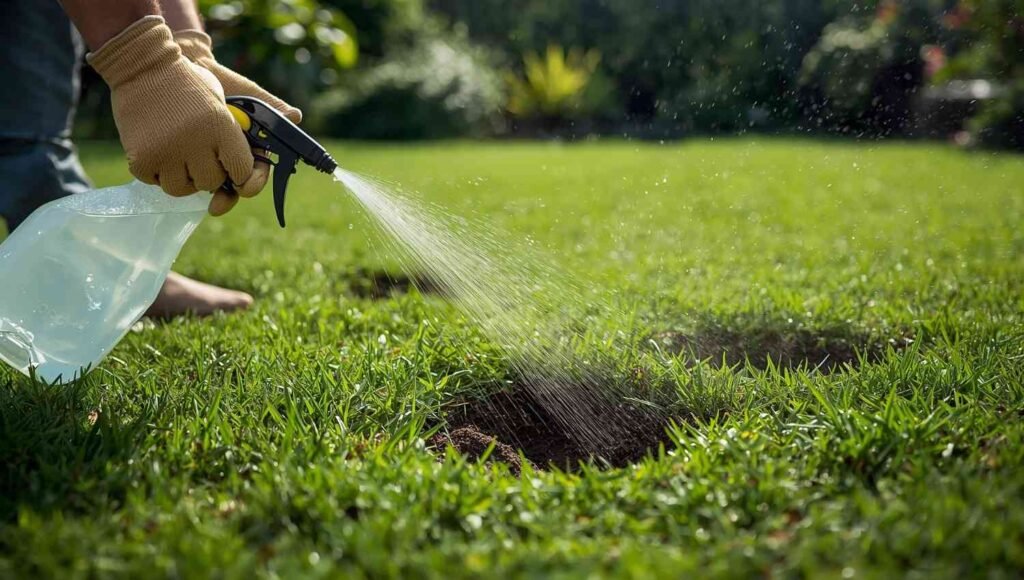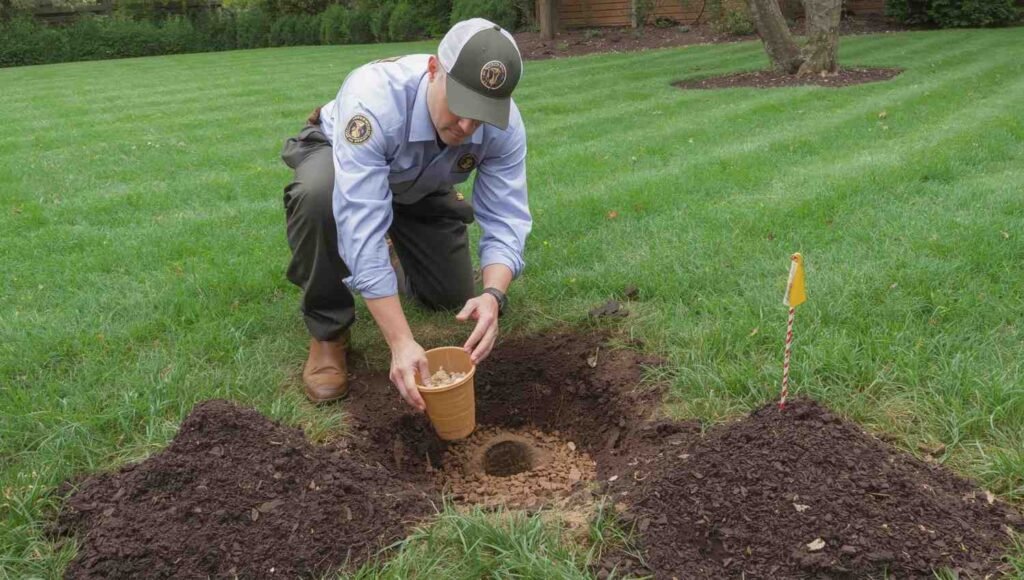Introduction
I still remember the first time I saw mole holes popping up across my yard — tiny mounds of soil disrupting my once smooth lawns. Living near a wooded area meant these subterranean mammals often moved in from an adjacent property. At first, I mistook them for other small animals like voles or shrews, but their distinct behaviors soon gave them away. These little creatures are experts at burrowing and creating tunnels and burrows underground. Although moles don’t usually appear above ground, the damage they cause can quickly turn a healthy garden into a nuisance for homeowners and gardeners alike.
Having dealt with ground moles before, I learned that while these streamlined animals might seem harmless, their digging and mounds can cause real destruction. I once spent a sunny morning with a spade in hand, determined to rid my garden of these critters, but soon realized that patience, effort, and the right advice matter more than frustration. From the British mole catchers register, there are said to be about 35–40 million moles in the U.K., which explains why so many farmers consider them pests. Thankfully, there are safe ways to deter them without harm, including professional treatment options and even natural methods like vinegar. Whether you’re facing one mound or many, taking the right steps will help keep your lawns and gardens both tidy and healthy under the sunshine.
The Law on Moles
It’s important to understand that moles are protected by law, so before you try to get rid of them, you must do it safely. Under the Wild Mammals Protection Act, 1996, it’s illegal for any person to mutilate, kick, beat, nail, impale, stab, burn, stone, crush, drown, drag, or asphyxiate any wild mammal, as this causes unnecessary suffering and makes you guilty of an offence. Later, the Animal Welfare Act, 2006 also made causing suffering, mutilation, or poisoning an animal a punishable act. Up until that point, strychnine poison was sometimes used, but as of 2021, no legal chemical repellents are allowed for mole control.
From my own experience working in a garden that once had a mole problem, I learned that understanding the pros and cons of each situation is key. While you may want to remove them, it’s crucial to do so with care and within the law. Always seek help from professionals who follow the correct procedures—this ensures both effective control and compliance with animal protection laws.
Signs of Moles in the Garden

If you suspect moles in your garden, there are clear signs to watch for. During winter, they don’t hibernate — they stay active under the Earth, digging tunnels to escape the frost. You may notice molehills, small piles of soil on lawns and flowerbeds, or raised ridges just below the surface. Sometimes, you’ll see scattered stones or disturbed roots around seedlings, small plants, or vegetable plots — even mowing machines can hit these uneven spots.
From October to April, mole activity tends to peak, leaving obvious clues of their presence. Though you’ll rarely spot these critters above ground, their hidden mole infestation can quickly damage your yard. I’ve seen how one small tunnel system can grow overnight — so acting early helps protect your soil and plants before the problem spreads.
What are Moles?
Moles belong to the family Talpidae and are known for their incredible digging ability using powerful forelimbs. Their velvety fur, tiny ears, and nearly invisible eyes make them perfectly adapted for life underground. With a sensitive snout for sensing their environment, they navigate soil with ease while hunting for food.
They are insectivores, mainly feeding on earthworms, grubs, and other soil-dwelling insects. From my experience tending lawns, I’ve learned that while these creatures may seem harmless, their hidden tunnels can create a surprising amount of disruption.
How to Identify Moles?
It’s easy to identify moles once you know what to look for. The first sign of activity is the presence of raised ridges or mounds of soil known as molehills, usually spread across your yard. These signs reveal pathways and living spaces built as they tunnel deep underground in search of food.
When I first discovered them in my garden, the uneven soil patterns gave it away. The way moles carve through the ground creates soft, hollow areas — clear evidence of an underground visitor.
How You Will Know If You Have Moles in Your Yard?

The best visual evidence of moles includes small molehills and other indicators like patches of dead grass or plants. This disruption occurs when their digging damages roots beneath soft ground. In some cases, tunnels may have collapsed, showing just how active these creatures can be.
Sometimes you’ll notice increased activity from predators such as snakes, which are attracted to areas with moles. I once realized I had an infestation only after seeing garden snakes slithering through the loosened earth — a sure clue that moles had made a home below.
Benefits of Moles
There are actually a few benefits to having moles in your garden and lawns. These animals improve soil drainage through their tunnels, helping to prevent flooding and puddles. Their movement mixes the soil, keeping it healthy and fertile.
Their constant tunnelling helps aerate the earth, boosting grass growth by improving access to nutrients, water, and roots. Molehills or excavated heaps can even be reused as potting compost. By feeding on grubs and other pests, moles protect young plants and bulbs, making them more helpful than most realize.
Living with Moles
Although moles are not endangered, their numbers appear to be declining, which means removing them without reason can impact the species. Keeping a balanced lawn while exploring humane options is always best. A professional may offer an alternative method that safeguards local wildlife.
Encouraging creatures to share your garden can help preserve life and keep the environment safe for multiple species. Personally, I’ve found that living alongside nature’s workers — even moles — makes my garden ecosystem stronger and more resilient.
How to Get Rid of Ground Moles with Vinegar?
Using vinegar is a non-toxic way of deterring moles. Mix water and vinegar in a spray bottle, then apply it near molehills. The strong scent helps repel them and encourages them to find a new habitat.
If ground moles persist, explore new ideas and adjust your method. I’ve used this approach myself, and while it takes patience, it’s one of the safest options for protecting your yard naturally.
Natural Repellents
There are many natural repellents that can discourage moles. Some rely on plants or homemade concoctions that are non-toxic and eco-friendly. These deterrents work through scent or root systems that moles find unappealing. Examples include daffodils (Narcissus), which contain alkaloids that are toxic to moles, marigolds (Tagetes) with their strong scent, and alliums like onions, garlic, and chives, known for their pungent odor.
Planting them around your yard or near areas with mole activity — especially along the perimeter — can help keep moles at bay. In my own garden, marigolds have proven both decorative and practical.
Homemade Mixtures
A simple homemade mixture can also help repel moles. Mix ingredients like castor oil, cayenne pepper, or garlic to create a mole repellent. Add dish soap and water to make a solution that spreads evenly over your lawn.
This blend can irritate a mole’s skin and digestive system, making them leave the area in search of comfort elsewhere. I’ve used this method before and found it both cheap and effective.
Ultrasonic Devices
Ultrasonic devices are a humane method to deter moles. They use sound waves and vibrations that are unpleasant to moles but unnoticed by humans.
When I tried one in my own garden, I was surprised at how quietly it worked while driving moles away over time.
How Ultrasonic Devices Work
These devices are placed in the ground, where they send out a sonic pulse or vibration at regular intervals. The noise disrupts a mole’s hearing and navigation, making the environment inhospitable for them.
I’ve seen these work best when combined with other methods, as their low-frequency pulses slowly encourage moles to move on.
Effectiveness of Ultrasonic Devices
The effectiveness of ultrasonic devices depends on several factors. Some users report success, while others see little change in mole activity. Conditions like soil type, device quality, and mole tolerance all influence performance.
From my testing, using them in conjunction with other methods has delivered better results overall.
Considerations of Natural Repellents or Ultrasonic Devices
When combining natural repellents and ultrasonic devices, consider factors like rain and how they affect effectiveness. Devices should be moved occasionally so moles don’t grow accustomed to them. A combination of both methods offers a comprehensive solution to mole problems.
These options are humane, environmentally friendly, and great for deterring ground moles. They fit perfectly within an integrated pest management approach to keep a mole-free yard.
Alternative Ways to Get Rid of Moles
There are permanent solutions available, but they often involve lethal options like traps or poisons. These should only be used as a last resort due to their impact on the ecosystem, pets, and children.
From my perspective, careful consideration of these risks is crucial before using harsh methods. Always prioritize humane and preventive strategies first.
How to Prevent Moles in Your Yard?

Preventing moles begins with making your yard less inviting. Reduce their food supply by introducing beneficial nematodes to control grubs and insects. Maintain a dry lawn, as moles prefer moist soil, and install physical barriers like buried wire mesh around gardens.
When I applied these steps, my garden became less appealing to moles, and their activity soon dropped without harming them.
Ecological Benefits of Moles
There are real ecological benefits to moles. Their digging helps with aerating soil, regulating insect populations, improving soil drainage, and reducing soil compaction.
By letting water and air flow freely through the ground via the channels they create, moles contribute to a more balanced soil ecosystem.
Other Ways to Prevent Pests
Beyond moles, there are other ways to prevent pests. In homes, you might find earwigs, which some claim coffee grounds can repel. Others use Diatomaceous Earth, essential oils, or a baking soda spray for control.
To stop predators like termites, aardvarks, anteaters, birds, and reptiles from causing issues, maintain a clean house and seal entry points. A tidy environment makes a huge difference.
When to Call a Professional
If mole activity continues despite your best efforts or you’re uncomfortable using lethal methods, contact a wildlife control professional. They ensure safety and compliance with local wildlife regulations.
Experts often use tools like castor oil, Dawn, or vinegar to target ground moles and other pests effectively without harming the ecosystem.

How Ehrlich Can Help Get Rid of Moles?
Moles may not spread diseases to humans or pets, but professional mole removal can be necessary if your yard shows heavy populations. Companies like Ehrlich offer control methods for getting rid of moles safely. Their service is efficient, led by a specialist who inspects tunnels, marks holes with a landscaping flag, and identifies active tunnel versus inactive tunnel sites.
A technician monitors ground activity over several weeks, ensuring the problem is solved completely. From my own experience, working with trained professionals saves time, money, and unnecessary stress.
Bait
Using bait is one of the most efficient ways to remove moles from your yard. Ehrlich’s multi-step service ensures effective removal by inspecting holes and mole tunnels marked with a landscaping flag.
Once active tunnels are found, bait is placed, and inactive tunnels are flattened by a technician to control the ground activity over several weeks.
Unused words: None
Oversight: None
Trap
Different types of traps exist, including mole traps like the plunger-style trap and scissor-style trap. These are triggered when a mole pushes through a depressed tunnel or passes an active mole tunnel.
However, this primary method of mole removal must be used carefully, as it can affect wildlife. In some states, traps must be checked daily to prevent harm to non-species-specific animals.
Repellents
There are many repellents that pest control professionals use — from ultrasonic devices and liquids to granular treatments. While baiting and trapping often work better, a professional can determine which option is most successful for your mole problem.
I’ve found that combining a repellent with good lawn care can discourage re-entry after removal.
Natural Mole Repellents
Simple natural remedies and repellents can help keep moles out of your yard. Creating a barrier around your property makes the area less appealing, while using natural ingredients helps to repel them safely.
Plant-based and scent-based methods have worked best for me, especially when used alongside proper maintenance.
Plants That Repel Moles
Certain plants and flowers in your landscaping can form a natural barrier. Marigolds, daffodils, and those from the allium family emit strong smells that moles dislike.
Planting these in your garden or mulch beds can help protect your property and add color at the same time.
Eliminate Food Sources
Controlling food sources is key because it’s the main motivator for moles. Remove their favorite meals by targeting earthworms, moss, and weeds. Regular grass cutting and garden maintenance will help.
This approach not only reduces pests like mice but also keeps your yard more effective in control efforts.
DIY Mole Repellents
Some people turn to DIY methods to remove moles from yards or gardens. However, many lack scientific support and may not remove the mole problem entirely.
Still, experimenting with a homemade repellent can be a safe starting point if done carefully.
Flooding
One method involves flooding mole tunnels with water from a garden hose. Since moles dislike unfriendly environments, this can force them to relocate to another property.
However, this must be done on an ongoing basis and may not fully eliminate the problem, though it can temporarily reduce mole activity.
Castor Oil and Dish Soap
A mixture of castor oil and dish soap makes an effective mole repellent. Pouring this mixture into tunnels can cause digestive issues that make the environment undesirable.
In urban areas, some moles may tolerate side effects, but I’ve seen this work surprisingly well when applied consistently.
Juicy Fruit Gum
Some try using Juicy Fruit gum by placing it on a molehill. The scent is said to attract moles, who may eat the wrapper, though they are carnivores that prefer insects and grubs.
This old myth is often ineffective, as moles aren’t truly attracted to or likely to eat or digest gum.
Conclusion
Moles help with aerating soil and managing insect populations, but their presence can become problematic for homeowners and gardeners. By studying mole behavior, you can use practical strategies to manage and prevent infestations.
With a focus on humane treatment and long-term effectiveness, you’ll maintain a balance between protecting your yard and respecting nature.
Frequently Asked Questions
How can I tell if I have moles or another animal digging in my lawn?
A common sign of mole activity is the appearance of raised, winding tunnels just beneath the surface — known as surface runways. These are formed as moles tunnel in search of food. You might also notice small, volcano-shaped mounds of soil called molehills, created when moles push dirt upward. Unlike voles or gophers, moles don’t leave open holes and are rarely seen above ground.
Are there any plants or landscaping tips that can repel moles?
Yes. Certain plants and landscaping techniques can help naturally repel moles. Moles dislike the strong scents of marigolds, daffodils, and alliums — all of which act as natural deterrents. You can also install underground mesh or gravel barriers to discourage tunneling. To make your yard less appealing, maintain it regularly and reduce excess moisture, which attracts moles.
Will moles go away on their own eventually?
Moles may leave if their food sources — such as insects and grubs — become scarce, but this isn’t guaranteed. As long as your yard provides plenty of food, they are likely to stay. Relying on them to leave naturally can lead to continued lawn damage. For lasting results, it’s best to take proactive steps to remove moles effectively.
Can moles cause serious damage to my lawn or garden?
Yes, moles can cause significant damage. While they don’t eat plants, their tunneling disturbs roots, dries out soil, and creates uneven, unsightly surfaces. This disruption can indirectly harm garden plants and landscaping features. To prevent long-term damage, act quickly — baiting or trapping moles early can stop their tunnels from spreading across your yard.




